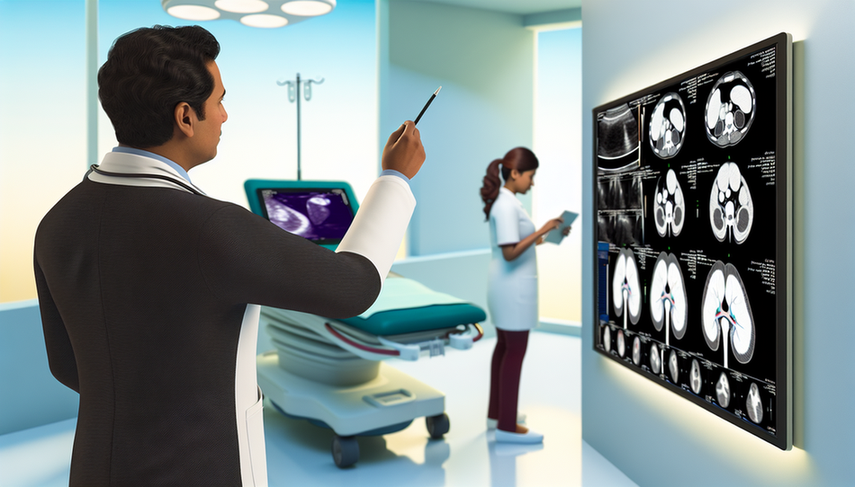Renal Cancer: Ultrasound and CT Findings for Timely Diagnosis of Renal Cell Carcinoma

Renal cancer is a pathology that has gained relevance in recent decades due to the increase in its incidence, partly thanks to the availability of advanced imaging techniques such as renal ultrasound and computed tomography (CT). These tools are fundamental for a timely diagnosis, allowing for the early detection of renal masses that may be indicative of renal cell carcinoma (RCC), the most common type of renal cancer.
Diving Deeper into Imaging Diagnosis
Renal ultrasound is often the first step in the evaluation of patients with symptoms such as lumbar pain or the presence of an abdominal mass. This non-invasive technique allows for the identification of renal masses, differentiating between cystic and solid lesions. However, ultrasound may have limitations in the detailed characterization of masses, making computed tomography an essential complementary tool.
CT provides a more detailed assessment of the characteristics of the renal mass, such as its size, density, and extent. According to a study, CT is crucial for determining the nature of renal masses, especially in the context of solid tumors [1]. Additionally, CT can identify signs of local invasion or metastasis, which is vital for staging and treatment planning.
In the case of renal angiomyolipomas without visible fat, CT and magnetic resonance imaging (MRI) can be useful for differential diagnosis, avoiding unnecessary treatments for these benign masses [2].
Conclusions
The combined use of renal ultrasound and computed tomography is essential for an accurate and timely diagnosis of renal cancer. These techniques not only allow for the early detection of renal masses but also provide the detailed characterization necessary to differentiate between benign and malignant lesions. Early detection and accurate diagnosis are crucial for improving the prognosis and quality of life of patients with renal cell carcinoma.
Referencias
- [1] Renal Mass
- [2] Renal angiomyolipoma without visible fat: Can we make the diagnosis using CT and MRI?
Created 13/1/2025
